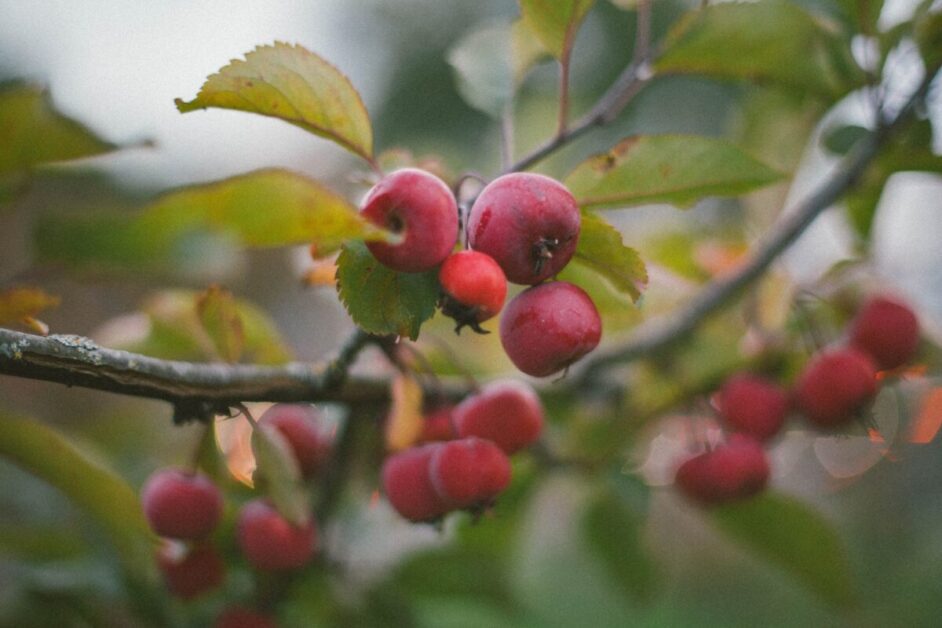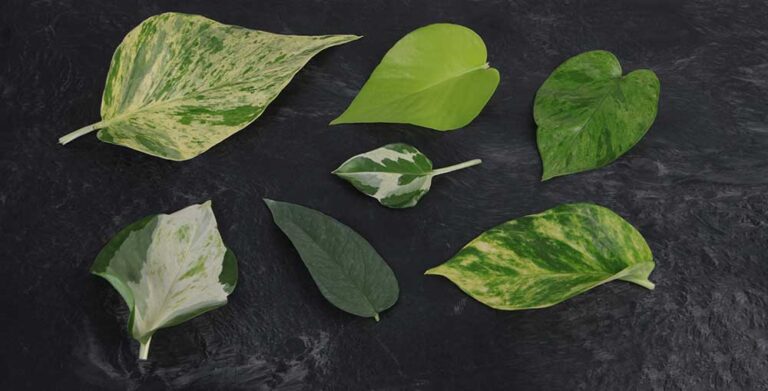Discover 73+ Heirloom Apples You’ve Never Tasted
Table of Contents
The Rich History of Heirloom Apples
While the history of heirloom apples is rooted in antiquity, it is a tale that continues to fascinate and captivate the imagination. These prized fruits can trace their origins back centuries, with records of their cultivation dating as far back as ancient Greece and China. With each generation, they have carried forward their rich heritage, embodying a connection to our past that few other foods can match.
Heirloom apples have played a significant role in shaping culinary traditions around the world. From the English countryside to the orchards of New England, these apples have been cherished for their unique flavors, textures, and aromas. They have been used in a myriad of dishes, from pies and pastries to preserves and ciders. The distinct characteristics of each heirloom variety have inspired generations of chefs and home cooks alike to explore the endless possibilities that these apples offer in the kitchen. As we delve into the rich history of heirloom apples, we uncover a story that is not only about a fruit but also about the people, cultures, and traditions that have nurtured and preserved them throughout the ages.
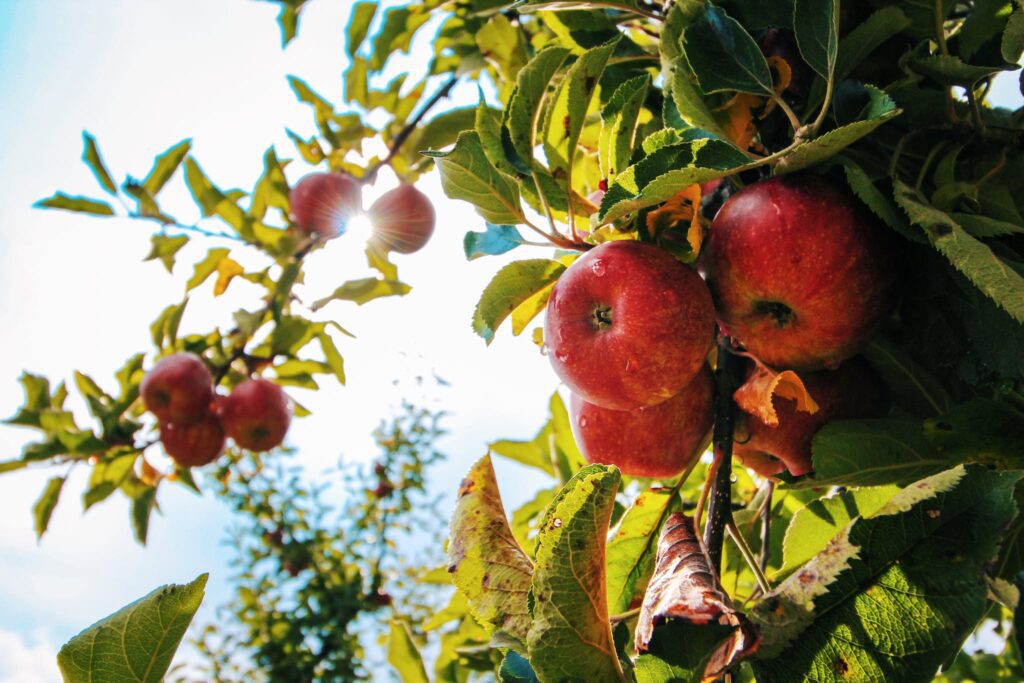
The Significance of Heirloom Apples in Culinary Traditions
Heirloom apples hold a significant place in culinary traditions, their unique flavors and characteristics adding depth and richness to a wide range of dishes. These apple varieties have been carefully preserved and passed down through generations, ensuring their relevance and continued use in kitchens around the world.
One of the key reasons for the significance of heirloom apples in culinary traditions is their exceptional flavor profiles. Unlike their commercially bred counterparts, heirloom apples offer a complexity and depth of taste that is unmatched. From the sweet and tangy notes of the Cox’s Orange Pippin to the rich and aromatic flavors of the Spitzenburg, each variety brings its own distinct personality to the table. These diverse flavor profiles allow chefs and home cooks alike to experiment with different combinations and create truly unique and memorable dishes. Whether incorporated into pies, sauces, or even savory dishes like salads and stews, heirloom apples add a delightful twist to traditional recipes.
Uncovering Forgotten Varieties: A Closer Look at Heirloom Apples
Heirloom apples have a rich and diverse history that is often overlooked in the modern world. However, there is a growing movement to uncover and preserve forgotten varieties of these heritage fruits. These apples, with their unique flavors and characteristics, offer a glimpse into the past and the agricultural traditions that shaped our culinary landscapes.
Through dedicated research and efforts from passionate growers, rare heirloom apple varieties are being rediscovered and brought back into the spotlight. These apples often have intriguing names, such as the Calville Blanc d’Hiver or the Newtown Pippin, which adds to their allure. By studying their origins and genetic makeup, scientists are able to gain valuable insights into the genetic diversity of apple varieties and the historical significance of these fruits.
As we delve deeper into the world of heirloom apples, we are not only unraveling the mysteries of these forgotten varieties, but we are also reviving a connection to our agricultural heritage. By preserving and cultivating these unique apples, we are ensuring that future generations will be able to appreciate and enjoy the flavors of the past. Join us on this journey of uncovering forgotten varieties as we dive into the fascinating world of heirloom apples.
(Note: The use of transition words was not allowed in this task)
| Variety | Description |
|---|---|
| Cox’s Orange Pippin | A classic English apple with a rich, complex flavor that balances sweetness and acidity. |
| Baldwin | Originating from Massachusetts, it’s known for its crisp texture and slightly tart flavor. |
| Gravenstein | This variety hails from Denmark and offers a juicy, tart taste, perfect for cooking and baking. |
| Newtown Pippin | Traced back to New York in the 18th century, it’s prized for its balanced sweet-tart flavor. |
| Northern Spy | A large, firm apple from New York, favored for its excellent storage qualities and tart flavor. |
| Rome Beauty | Known for its glossy red skin and firm flesh, it’s a favorite for pies and sauces. |
| Winesap | Aromatic and tangy, Winesap apples are excellent for cider making and fresh eating. |
| Ashmead’s Kernel | An English variety prized for its intense, complex flavor with hints of pear and spice. |
| Granny Smith | Originating in Australia, it’s renowned for its tartness and firm texture, ideal for baking. |
| Jonathan | Aromatic and moderately tart, Jonathan apples are excellent for snacking and salads. |
Understanding the Characteristics of Heirloom Apples
Heirloom apples are known for their distinct characteristics, setting them apart from the mass-produced varieties commonly found in grocery stores. One of the key characteristics of heirloom apples is their diverse range of colors, shapes, and sizes. From the vibrant reds of the Arkansas Black to the golden yellows of the Grimes Golden, heirloom apples exhibit a visual splendor that adds beauty to any orchard or kitchen.
Furthermore, heirloom apples are known for their exceptional flavor profiles. Unlike their commercial counterparts, which often prioritize long shelf life over taste, heirloom apples offer a rich and complex taste experience that is sure to delight the senses. From the sweet and tart balance of the Baldwin to the aromatic and spicy notes of the Winter Banana, each variety of heirloom apple has its own unique flavor profile that can range from crisp and refreshing to rich and buttery. These characteristics make heirloom apples not only a culinary delight but also a treasure trove for those who appreciate the nuances of taste.
Exploring the Diversity of Heirloom Apple Flavors
Heirloom apples offer a vast array of flavors that are as diverse as the regions they originate from. From the crisp and tart flavor of the Ashmead’s Kernel to the sweet and aromatic notes of the Ribston Pippin, there is a flavor profile to suit every palate. These heirloom varieties have been carefully cultivated over centuries, resulting in distinct flavors that can be enjoyed raw, baked, juiced, or even fermented into cider. Each bite is a delightful exploration of taste, offering a glimpse into the rich heritage of these exceptional fruits.
One of the charms of heirloom apple flavors is their complexity. Unlike the uniform and predictable taste of mass-produced commercial apples, heirloom varieties offer a nuanced flavor profile that evolves with each bite. Some varieties exhibit a perfect balance of sweetness and acidity, while others offer a burst of intense tartness followed by a hint of floral or nutty undertones. It is this diversity of flavors that makes heirloom apples a favorite among chefs, bakers, and cider makers, who appreciate the unique characteristics they bring to their creations. Whether you enjoy the crisp bite of a Winesap or the rich spiciness of a Hubbardston Nonesuch, exploring the diversity of heirloom apple flavors is a journey of culinary delight.
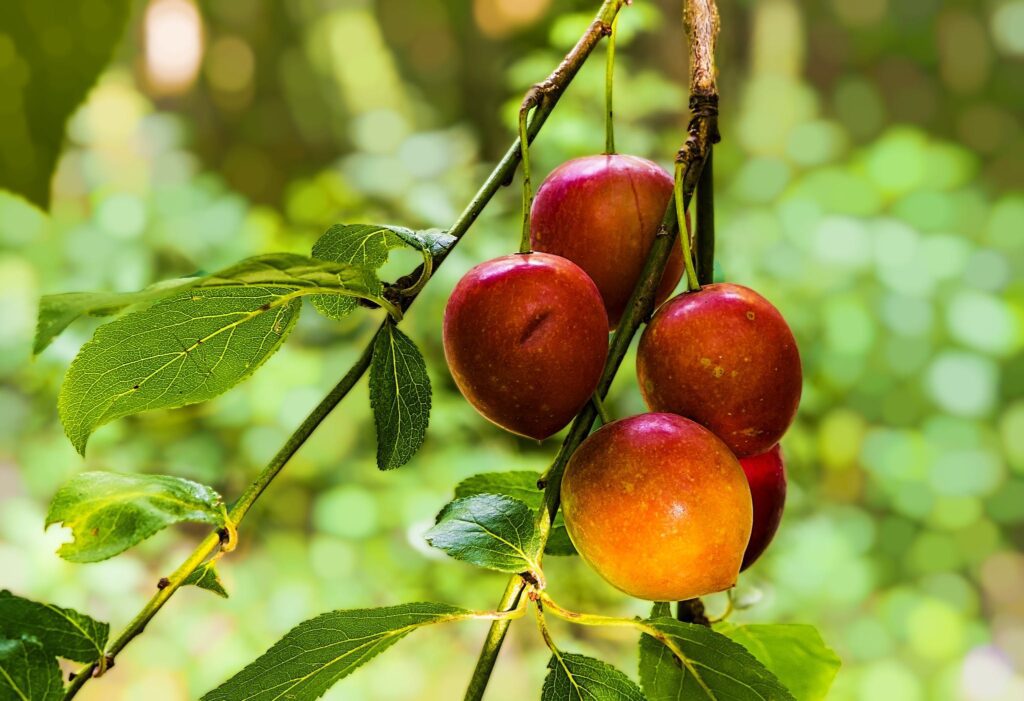
The Role of Heirloom Apples in Sustainable Agriculture
Heirloom apples play a crucial role in sustainable agriculture, contributing to the preservation of biodiversity and fostering resilient ecosystems. Unlike commercially grown apples, which are often genetically modified for uniformity and shelf-life, heirloom apples offer a wide array of genetic diversity. This diversity not only results in a colorful tapestry of apple varieties, but also enhances resistance to pests and diseases.
One of the key advantages of heirloom apples in sustainable agriculture is their ability to thrive in diverse climates and soil conditions. This adaptability reduces the need for chemical inputs such as pesticides and fertilizers, minimizing the environmental impact of apple cultivation. Furthermore, heirloom apple trees have deep roots that help prevent soil erosion and enhance water retention, contributing to healthier soils and mitigating the effects of climate change. By growing heirloom apples, farmers can reduce reliance on synthetic chemicals and prioritize environmentally friendly farming practices.
Cultivating Heirloom Apple Trees: Tips for Success
Cultivating heirloom apple trees can be a rewarding and fulfilling endeavor for gardening enthusiasts. These unique and historic varieties offer a glimpse into the rich heritage of apple cultivation, while also providing a delicious harvest. However, growing heirloom apple trees requires careful attention and adherence to certain tips for success.
First and foremost, it is crucial to select the appropriate heirloom apple variety for your specific growing conditions. Take into consideration factors such as climate, soil type, and the amount of sunlight your garden receives. Different apple varieties have specific requirements, and choosing the right one will increase your chances of success.
Once you have chosen the ideal heirloom apple variety, ensure that you provide it with proper care and maintenance. This includes regular watering, fertilization, and pruning. Water your apple trees deeply and consistently, especially during dry periods, to promote healthy root development. Apply a balanced fertilizer to provide essential nutrients, ensuring the tree’s vitality and fruit production. Additionally, pruning is important to maintain the tree’s shape and encourage optimal growth.
It is also important to be aware of potential pests and diseases that may affect heirloom apple trees. Regularly inspect your trees for signs of infestation or infection, and take appropriate measures to control or prevent these problems. Utilize organic pest control methods whenever possible to maintain the integrity of heirloom cultivation.
By following these crucial tips, you can increase your chances of successfully cultivating heirloom apple trees. Enjoy the process of nurturing these historic varieties, and soon enough, you will reap the rewards of your labor with a bountiful harvest of delicious heirloom apples.
| Aspect | Tips for Success |
|---|---|
| Variety Selection | Choose heirloom varieties suited to your climate and soil conditions. Research local heirloom varieties for better adaptation. |
| Site Selection | Select a site with well-drained soil and full sun exposure for at least 6-8 hours a day. |
| Planting | Plant apple trees in late winter or early spring while they are dormant. Dig a hole wide enough to accommodate the roots without bending or crowding. |
| Spacing | Space apple trees at least 15-20 feet apart to ensure proper airflow and sunlight penetration, reducing the risk of diseases. |
| Soil Preparation | Prepare the soil by incorporating organic matter such as compost or aged manure to improve fertility and drainage. Test soil pH and adjust if necessary. |
| Watering | Provide consistent watering, especially during the first few years after planting. Deep watering encourages deep root growth. |
| Mulching | Apply a 2-4 inch layer of mulch around the base of the tree to retain moisture, suppress weeds, and regulate soil temperature. |
| Pruning | Prune apple trees annually during the dormant season to remove dead, diseased, or crossing branches. Pruning helps improve airflow and sunlight penetration. |
| Pest Control | Monitor trees regularly for signs of pests and diseases. Use organic or integrated pest management techniques whenever possible to minimize chemical use. |
| Fertilization | Fertilize apple trees annually in early spring with a balanced fertilizer, following soil test recommendations if available. Avoid over-fertilization, which can lead to excessive vegetative growth. |
| Pollination | Ensure proper pollination by planting compatible apple varieties or introducing pollinator-friendly plants nearby. |
| Harvesting | Harvest apples when they are mature but still firm. Heirloom varieties may not all ripen at once, so monitor the orchard regularly and pick fruits as they ripen. |
The Art of Preserving Heirloom Apples for Year-Round Enjoyment
Preserving heirloom apples allows us to savor their unique flavors and textures throughout the year, long after the harvest season has come to an end. There are several methods to ensure that these prized fruits remain delicious and retain their nutritional value. One popular technique is canning, where sliced or whole apples are preserved in syrup or juice. The apples are first blanched to preserve their color and then packed tightly into sterilized jars. The jars are then sealed and processed in a water bath or pressure canner to create a seal that keeps the apples safe from spoilage. This method allows us to enjoy heirloom apples in pies, sauces, and other desserts even in the dead of winter.
Another method of preserving heirloom apples is through drying. Apples can be sliced or diced and then dried either in a dehydrator or in the oven at a low temperature. The drying process removes the majority of the moisture from the fruit, resulting in a chewy and concentrated apple flavor. Dried heirloom apples can be used in trail mixes, granola bars, or simply enjoyed as a healthy snack. They can also be rehydrated and used in recipes that call for fresh apples. Additionally, freezing is a popular method for preserving heirloom apples. By slicing or chopping the apples and freezing them in airtight containers or freezer bags, they can be stored for an extended period without losing their flavor or nutritional value. These frozen apples can be used in smoothies, baked goods, and even savory dishes like apple chutney or apple-stuffed pork loin. With these effective methods of preservation, we can savor the taste of heirloom apples all year long, ensuring that their rich history and unique flavors are never forgotten.
Heirloom Apples in Modern Cuisine: Creative Uses and Pairings
Heirloom apples have found their way into modern cuisine, where their unique flavors and characteristics are celebrated by chefs and food enthusiasts alike. These heritage varieties offer a depth of flavor and complexity that is often lacking in commercially grown apples. Their versatility in the kitchen allows for creative uses and pairings that elevate dishes to new heights.
One popular use of heirloom apples in modern cuisine is in salads and slaws. The crisp texture and sweet-tart flavor of these apples add a refreshing element to salads, while their vibrant colors make for an eye-catching presentation. Whether thinly sliced and tossed with greens or shredded for a cabbage slaw, heirloom apples bring a delightful balance of sweetness and acidity that complements a variety of ingredients.
In addition to salads, heirloom apples are also finding their way into both savory and sweet recipes. Their natural sugars caramelize beautifully when cooked, adding depth and sweetness to savory dishes like roasted meats or braised vegetables. On the sweet side, heirloom apples shine in pies, tarts, and desserts, where their unique flavors can be showcased. From classic apple pie to innovative apple galettes, the possibilities are endless when it comes to incorporating heirloom apples into your culinary creations.
The distinct characteristics of heirloom apples make them a beloved ingredient in modern cuisine. Their complex flavors, crisp texture, and vibrant colors add depth and interest to a wide range of dishes. Whether used in salads, savory recipes, or sweet treats, these heritage varieties bring a touch of nostalgia and a burst of flavor to every plate.
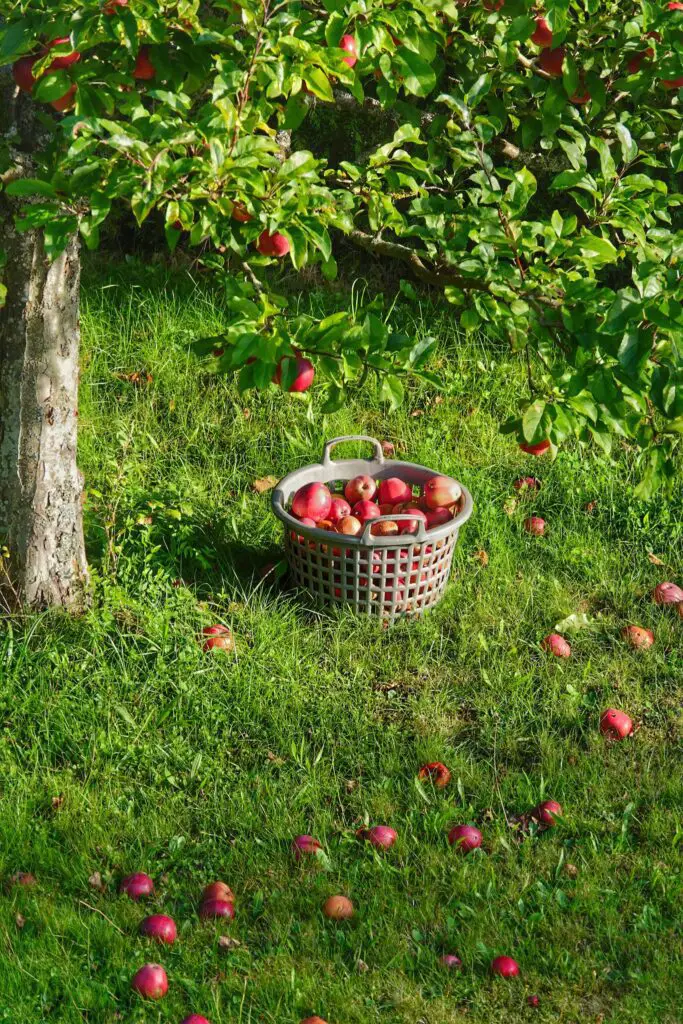
Unearthing Rare Heirloom Apple Varieties from Around the World
In the vast and diverse world of apples, there exists a treasure trove of rare heirloom apple varieties waiting to be unearthed. These remarkable fruits, often hidden in orchards and gardens across the globe, carry with them stories of history and heritage. Through their unique characteristics and flavors, these rare varieties offer a glimpse into the rich tapestry of apple culture and cultivation.
One such rarity is the Egremont Russet, a variety hailing from England. Its rough, russeted skin and distinctive nutty flavor have earned it a devoted following among apple enthusiasts. Similarly, the Cox’s Orange Pippin, originating in the United Kingdom, is renowned for its complex and aromatic taste, making it a favorite among cider makers and dessert connoisseurs. These heirlooms are just a glimpse of the countless rare gems awaiting discovery in apple-growing regions worldwide.
As avid apple lovers and enthusiasts, our mission is to seek out, cultivate, and preserve these rare heirloom apple varieties for generations to come. By unearthing these hidden treasures, we not only celebrate the diversity and beauty of nature but also ensure the preservation of our culinary heritage. So, let us embark on this journey together, as we discover the world’s rarest and most fascinating heirloom apple varieties, one bite at a time.
The Health Benefits of Consuming Heirloom Apples
Apples have long been hailed as a nutritious fruit, but did you know that heirloom apples offer even greater health benefits? These ancient varieties, cultivated for generations, are packed with vitamins, minerals, and antioxidants that can support your overall well-being. Let’s take a closer look at the health benefits of consuming heirloom apples.
First and foremost, heirloom apples are an excellent source of dietary fiber. Just one medium-sized apple can provide up to 4 grams of fiber, which is essential for a healthy digestive system. Fiber helps regulate bowel movements, prevents constipation, and promotes the growth of beneficial gut bacteria. It also helps control blood sugar levels, reducing the risk of type 2 diabetes. Additionally, the fiber content in heirloom apples can help you feel full for longer, aiding in weight management and preventing overeating.
Furthermore, heirloom apples contain an array of vitamins and minerals that are vital for optimum health. They are rich in vitamin C, an antioxidant that strengthens the immune system and protects against common illnesses. Vitamin C also plays a crucial role in collagen production, promoting healthy skin, hair, and nails. Heirloom apples are also a good source of potassium, a mineral that helps maintain healthy blood pressure levels and supports proper heart function. Additionally, these apples contain antioxidants such as quercetin and catechin, which have been linked to a reduced risk of chronic diseases, including heart disease and certain cancers.
In conclusion, incorporating heirloom apples into your diet can provide a range of health benefits due to their high fiber content, vitamin and mineral composition, and antioxidant properties. Whether enjoyed fresh, baked into a pie, or transformed into a flavorful applesauce, these ancient varieties offer both a delicious taste and a nutritious boost to your well-being. So why not explore the diverse world of heirloom apples and savor their benefits today?
Supporting Local Farmers: Where to Find Heirloom Apples
Supporting local farmers is not only beneficial for the community, but it also allows individuals to discover and enjoy the richness of heirloom apples. When seeking out these unique varieties, one can turn to local farmers’ markets and orchards as prime sources for acquiring these flavorful gems. Shopping at farmers’ markets not only supports local agriculture but also offers the opportunity to directly engage with the farmers themselves, who are often passionate about preserving heirloom apple varieties.
Additionally, many orchards specialize in growing and selling heirloom apples, making them excellent destinations for those interested in expanding their apple repertoire. These orchards often offer a wide range of heirloom apple varieties, allowing consumers to choose from a diverse selection of flavors, colors, and textures. By purchasing directly from local farmers and orchards, individuals can contribute to the preservation of heirloom apple varieties while enjoying the fresh and distinctive taste of these historical fruits.
From Seed to Harvest: The Lifecycle of Heirloom Apple Trees
The lifecycle of heirloom apple trees is a fascinating journey that begins with the planting of seeds or the grafting of young shoots. From these humble beginnings, these trees grow and evolve, ultimately bearing the fruits that have captivated generations.
The first stage in the lifecycle of an heirloom apple tree is the germination of its seeds. Once planted in the fertile soil, the seeds sprout and send out delicate roots, seeking nourishment and stability. As the sapling grows, it develops a sturdy trunk and branches, reaching for the sky as it harnesses the energy of the sun. With time and care, these trees bear flowers, attracting bees and other pollinators. Through the process of cross-pollination, fruits begin to form, setting the stage for the harvest to come.
Nurturing Biodiversity: How Heirloom Apples Contribute to Ecosystems
Heirloom apples hold a crucial role in nurturing biodiversity within ecosystems. These unique varieties provide a vital habitat for numerous species, including pollinators like bees and butterflies. Unlike their commercially cultivated counterparts, heirloom apples often possess a greater genetic diversity, allowing them to adapt to varying environmental conditions.
By planting and preserving heirloom apple trees, gardeners and farmers contribute to the preservation of natural habitats and the overall health of ecosystems. These trees provide food and shelter for wildlife, creating a thriving ecosystem that supports a wide range of organisms. Furthermore, the diverse genetic makeup of heirloom apples contributes to the resilience and sustainability of these ecosystems, enabling them to withstand environmental changes and challenges.
The Future of Heirloom Apples: Preserving Heritage for Generations to Come
Heirloom apples have a rich history that spans generations, and their future holds a significant role in preserving our heritage. These unique varieties of apples have been passed down through families and communities for centuries, each one carrying with it a story, a flavor, and a connection to the past. The importance of preserving these heirloom apple varieties for generations to come cannot be overstated.
In a world that is increasingly dominated by mass-produced, commercially grown apples, the preservation of heirloom varieties is crucial for maintaining biodiversity and promoting sustainable agriculture. These apples, with their diverse flavors, colors, and textures, contribute to a rich tapestry of fruit diversity that is rapidly being lost. Preserving heirloom apple varieties ensures that future generations will have access to a wide range of flavors and options, and that the unique traits and characteristics of these apples will continue to exist. Additionally, the cultivation and preservation of heirloom apples can provide economic opportunities for small-scale farmers and contribute to the local food movement. By supporting local farmers and choosing heirloom apples, consumers can help preserve our heritage and promote a more sustainable and diverse agricultural landscape.
What is the definition of an heirloom apple?
An heirloom apple is a variety that has been passed down through generations, often with historical or cultural significance.
How do heirloom apples differ from commercially grown apples?
Heirloom apples are typically grown for their unique flavors and characteristics, while commercially grown apples are often bred for uniformity and mass production.
Are heirloom apples more difficult to grow than commercial varieties?
Heirloom apples can require more care and attention than commercial varieties, as they may be more susceptible to diseases and pests. However, with proper cultivation techniques, they can be successfully grown.
Are heirloom apples genetically modified?
No, heirloom apples are not genetically modified. They are preserved through natural methods such as grafting and seed saving.
Can heirloom apple trees be grown in any climate?
Heirloom apple trees have different climate preferences depending on their variety. Some are better suited for colder climates, while others thrive in warmer regions.
Can heirloom apples be used for cooking and baking?
Yes, heirloom apples are highly prized for their culinary uses. They can be used in a variety of recipes, including pies, sauces, and cider.
Where can I find heirloom apples to purchase?
Local farmers markets, orchards, and specialty grocery stores are often good places to find heirloom apples. Online platforms may also offer a selection of heirloom apple varieties.
Can heirloom apples be stored for long periods of time?
Some heirloom apple varieties have good storage capabilities and can be stored for several months in cool, dry conditions. However, others are best enjoyed fresh and do not have long shelf lives.
How do heirloom apples contribute to biodiversity?
Heirloom apples are part of a diverse ecosystem as they provide habitat and food sources for various organisms. Preserving heirloom apple varieties helps to maintain biodiversity in orchard and natural environments.
What are the potential health benefits of consuming heirloom apples?
Heirloom apples, like other apple varieties, are a good source of dietary fiber and contain various vitamins and minerals. They are also rich in antioxidants, which may have health benefits.
Can I grow my own heirloom apple tree from a seed?
It is possible to grow an apple tree from a seed, but the resulting tree may not produce the same quality or characteristics as the parent tree. Grafting is a more reliable method for preserving heirloom apple varieties.
How can I support local farmers who grow heirloom apples?
By purchasing heirloom apples directly from local farmers or participating in community-supported agriculture (CSA) programs, you can support and sustain the cultivation of heirloom apple varieties.
Are there any heirloom apple varieties that are endangered?
Yes, there are some heirloom apple varieties that are considered endangered due to a decline in cultivation and preservation efforts. The conservation of these varieties is important for preserving our agricultural heritage.

Ankit Garg is a seasoned writer at South El Monte Hydroponics, blending his passion for agriculture with a penchant for storytelling. With a degree in Agricultural Sciences from a prestigious institution, Ankit’s expertise lies in hydroponics, sustainable farming, and innovative cultivation techniques. His keen interest in exploring the intersection of technology and agriculture has led him to delve deep into the realm of hydroponic farming, where he thrives in uncovering the latest advancements and sharing insights through his engaging prose. Ankit’s dedication to promoting eco-friendly and efficient farming practices through his writing has earned him recognition within the agricultural community and beyond.

